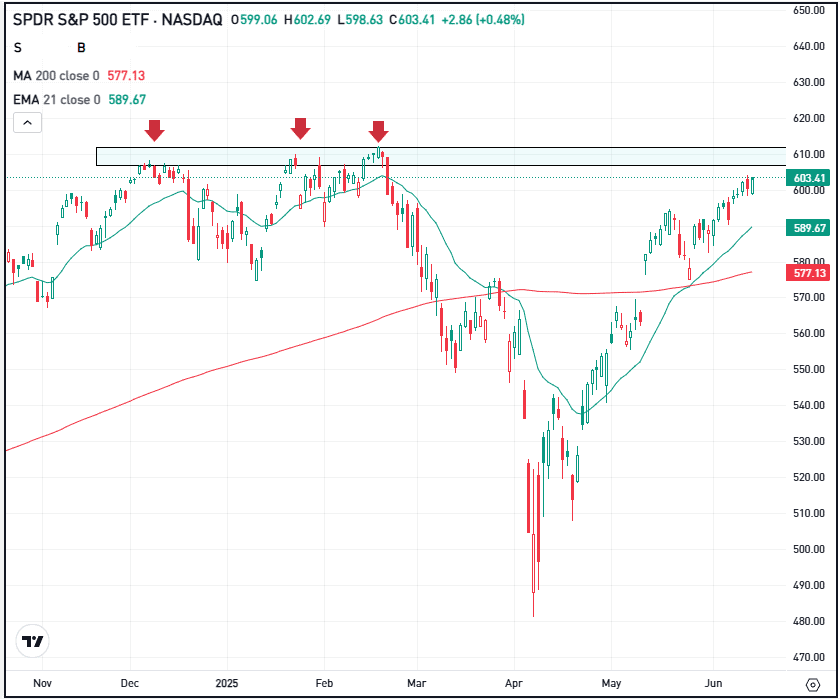Q1 earnings are in the books and the S&P 500 did a pretty good job, sporting double-digit growth. What was the tone from the quarter, though?
Before we dive in, let’s make sure you’re set to receive The Daily Breakdown each morning. To keep getting our daily insights, all you need to do is log in to your eToro account.
Friday’s TLDR
- Q1 earnings were solid
- And the outlook was a relief
- But can the consumer stay strong?
What’s Happening?
In April, I went through nearly 20 conference calls to give you an idea of how corporate America — like banks, credit card companies, and airlines — viewed the current landscape. Overall, it was pretty solid. But it hadn’t included retail earnings, as most of them reported in the second half of May.
With that, here’s a more comprehensive takeaway.
First-quarter earnings are (basically) in the books and investors should be exhaling a sigh of relief. The S&P 500 put together a quarter of double-digit earnings growth (+13.3%, according to FactSet), but more importantly, management spoke about the underlying strength and resilience of the consumer.
Big Picture Takeaway
Consumers remain broadly resilient, supported by strong employment, steady incomes, and solid balance sheets. Spending is holding up across income levels, with particular strength among affluent households. That said, lower-income consumers are showing signs of moderation as they continue to navigate inflationary pressure.
Travel and entertainment spending has softened — particularly in more price-sensitive categories like economy airfare — though restaurant and lodging demand remains stable.
Despite weaker sentiment, most companies report no major pullback in consumer behavior. Several even noted renewed momentum in April, prompting upward guidance revisions. While macro uncertainty lingers, improving sentiment, wage growth, and stock market gains offer hope for a more stable second half.
A More Granular View From Retailers
Retailers report mixed signals. Dollar General noted strain among its core base, but increased spending from middle- and higher-income shoppers. Walmart sees a continued shift toward necessities, while TJX and Costco report broad-based strength. Home Depot describes a healthy consumer with strong home equity, but says high interest rates are limiting large renovation projects.
The Bottom Line
Q1 earnings were solid, but with trade tensions still present — albeit to a lesser degree — Q2 and Q3 could be a more difficult hurdle. However, investors may overlook the tariff impact to earnings if they remain confident in the consumer and if they believe that earnings growth will re-accelerate in Q4 and into 2026.
Given how critical the consumer is to corporate profits and the US economy — with consumer spending accounting for roughly two-thirds of GDP — it’s reassuring to hear a cautious-but-optimistic takeaway from Q1. If that trend persists throughout Q2, the US economy could remain resilient in the face of ongoing macro uncertainty.
Want to receive these insights straight to your inbox?
The Setup — S&P 500
The SPY ETF has been on fire, up about 25% from its April low and now within 2% of its record high from February. Now, SPY is coming into a key resistance area in the $607 to $612 range, which held firm in December, January, and February.

Active investors may see this area and opt to trim some of their long positions or consider hedging in the event of a decline, while less optimistic investors may consider this to be a bearish setup. Others may simply observe the S&P 500 to see how it handles this zone.
A pullback from this area could set up a potential “buy the dip” scenario, while a breakout could help trigger the next leg of the rally. Or, if markets really lose momentum, this resistance zone could hold firm and trigger a larger selloff.
Regardless of how the charts resolve in the short term, knowing this potential resistance area could be helpful for active investors.
Options
For options traders, puts or bear put spreads could be one way to speculate on resistance holding if SPY gets there. It could also be a way for investors to hedge their long positions in the event of a pullback. On the flip side, bulls could utilize calls to speculate on a breakout.
Find out more about options trading with our free Academy courses.
Disclaimer:
Please note that due to market volatility, some of the prices may have already been reached and scenarios played out.






